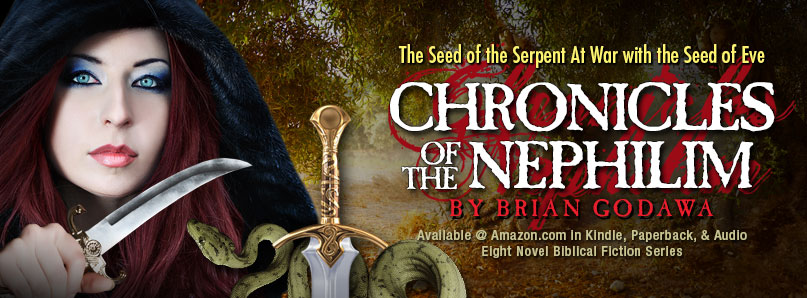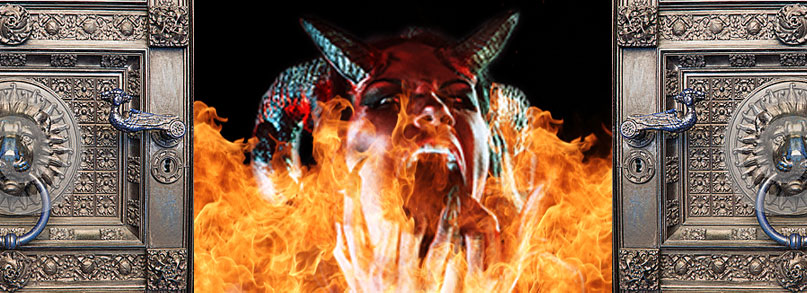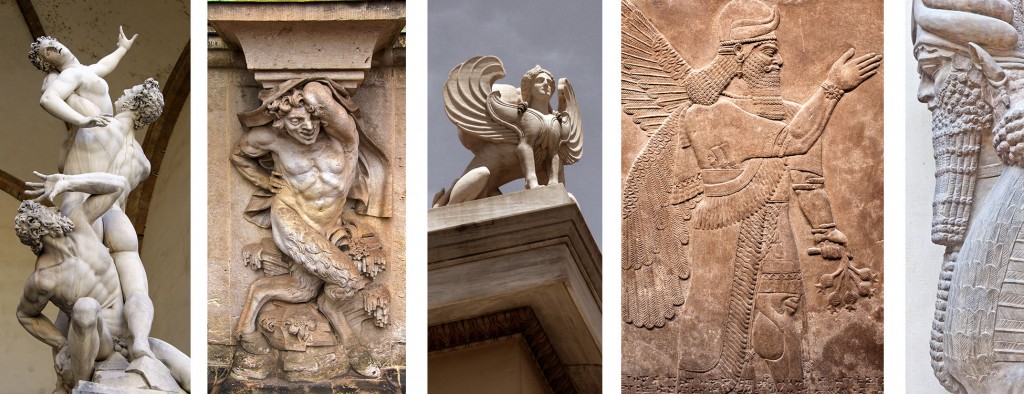
Lilith as she appears in Chronicles of the Nephilim, guarding Gaia the earth goddess tree, with Ningishzida, the serpent.
Last post, I wrote about how the Bible subverted a popular pagan creature, the satyr, and quite literally demonized it into a liminal creature of chaos in the desert in Isaiah 34. Satyrs, along with other chaos creatures, were depicted as dancing on the ruins of Babylon, a kind of Biblical mockery of God’s judgment upon those pagan God-haters.
Another Mesopotamian deity subverted in that same Old Testament narrative is Lilith, the she-demon. There are some ancient Jewish myths that say Lilith was Adam’s first wife, but these were adapted much later than the original Mesopotamian Lilith. Let’s take a look at this monster.
Regarding her, the Dictionary of Deities and Demons in the Bible says its Mesopotamian narrative reaches back to the third millennium B.C.
Here we find Inanna who plants a tree later hoping to cut from its wood a throne and a bed for herself. But as the tree grows, a snake [Ningishzida] makes its nest at its roots, Anzu settled in the top and in the trunk the demon makes her lair… Of greater importance, however, is the sexual aspect of the—mainly—female demons lilitu and lili. Thus the texts refer to them as the ones who have no husband, or as the ones who stroll about searching for men in order to ensnare them.[1]
Lilith was also known as the demon who stole away newborn babies to suck their blood, eat their bone marrow and consume their flesh.[2] In later Jewish legends, she was described as having long hair and wings, and claimed to have been the first wife of Adam who was banished because of Adam’s unwillingness to accept her as his equal.[3] Lilith and her offspring make their appearance in Chronicles of the Nephilim (including Jesus Triumphant) as temptresses guarding Gaia, the earth goddess (a huge tree) in the desert with the snake god Ningishzida in the roots and the Anzu bird in its high branches.
Lilith the “night hag” makes her appearance in the Bible in Isaiah 34 along with that other pagan mythical creature, the satyr, a demonized interpretation of the goat-like god Pan. In this chapter, prophetic judgment upon Edom involves turning it into a desert wasteland that is inhabited by all kinds of demon-like liminal creatures; ravens, jackals, hyenas, satyrs — and Lilith.
Isaiah 34:5, 13-15 (RSV)
5 For My sword is satiated in heaven, Behold it shall descend for judgment upon Edom And upon the people whom I have devoted to destruction…13 Thorns shall grow over its strongholds, nettles and thistles in its fortresses. It shall be the haunt of jackals, an abode for ostriches. 14 And wild beasts shall meet with hyenas, the satyr shall cry to his fellow; yea, there shall the night hag (“Lilith”) alight, and find for herself a resting place. 15 There shall the owl nest and lay and hatch and gather her young in her shadow; yea, there shall the kites be gathered, each one with her mate.
Verse 15 talks about the owl that nests and lays and hatches her young in its shadow. But lexicons such as the Theological Wordbook of the Old Testament and Brown, Driver, Briggs Hebrew Lexicon contest this Hebrew word for owl (qippoz) with more ancient interpretations of an “arrow snake.”[4] If they are correct, then the poetry of the passage would be more complete as the NASB indicates.
Isaiah 34:14–15 (NASB95)
14 Yes, the night monster (Lilith) will settle there And will find herself a resting place. 15 The tree snake (qippoz) will make its nest and lay eggs there, And it will hatch and gather them under its protection.
The snake of verse 15 would match the Lilith myth (v. 14) with the snake in the roots making its nest. The correlation is too close to deny that this is another Biblical reference to a popular mythic creature that the Bible writers refer to in demonic terms.
The Dead Sea Scrolls of Qumran evidence a preoccupation with demonology that includes reference to this very Isaianic passage. In The Songs of the Sage, we read an exorcism incantation,
“And I, the Instructor, proclaim His glorious splendor so as to frighten and to terrify all the spirits of the destroying angels, spirits of the bastards, demons, Lilith, howlers, and [desert dwellers…] and those which fall upon men without warning to lead them astray[5]
There she is again, that demon b*tch. What else can I say? Note the reference to “spirits of the bastards,” a euphemism for demons as the spirits of dead Nephilim who were not born of human fathers, but of angels.[6]
So the short of it is that Biblical writers were very aware of the pagan myths that surrounded them, and used them in a way that demonized them, quite literally — including Lilith, that evil feminist icon.
Deuteronomy 32:16–17 (ESV)
16 They stirred him to jealousy with strange gods; with abominations they provoked him to anger. 17 They sacrificed to demons that were no gods, to gods they had never known, to new gods that had come recently, whom your fathers had never dreaded.
[1] “Lilith,” DDD, 520.
[2] Handy, Lowell K. “Lilith (Deity)”. In The Anchor Yale Bible Dictionary, edited by David Noel Freedman. New York: Doubleday, 1992, 324-325.
[3] Ginzberg, Louis; Szold, Henrietta (2011-01-13). Legends of the Jews, all four volumes in a single file, improved 1/13/2011 (Kindle Locations 1016-1028). B&R Samizdat Express. Kindle Edition.
[4] 2050a,קִפּוֹז Theological Wordbook of the Old Testament, ed. R. Laird Harris, Gleason L. Archer, Jr. and Bruce K. Waltke, electronic ed., 806 (Chicago: Moody Press, 1999). קִפּוֹזBrown, Francis, Samuel Rolles Driver, and Charles Augustus Briggs. Enhanced Brown-Driver-Briggs Hebrew and English Lexicon. electronic ed. Oak Harbor, WA: Logos Research Systems, 2000.
[5] 4Q510 Frag. 1. Michael O. Wise, Martin G. Abegg Jr., and Edward M. Cook, The Dead Sea Scrolls: A New Translation (New York: HarperOne, 2005), 527. Janet Howe Gaines, “Lilith: Seductress, Heroine or Murderer?” Bible History Daily, 08/11/2014, http://www.biblicalarchaeology.org/daily/people-cultures-in-the-bible/people-in-the-bible/lilith/, accessed 9/8/14.
[6] Loren T. Stuckenbruck, “The ‘Angels’ and ‘Giants’ of Genesis 6:1-4 in Second and Third Century BCE Jewish Interpretation: Reflections on the Posture of Early Apocalyptic Traditions,” Dead Sea Discoveries, Vol. 7, No. 3, Angels and Demons (2000), pp. 354-37; Ida Fröhlich,”Theology and Demonology in Qumran Texts,” Henoch; Vol. 32 Issue 1, June 2010, 101-129.












